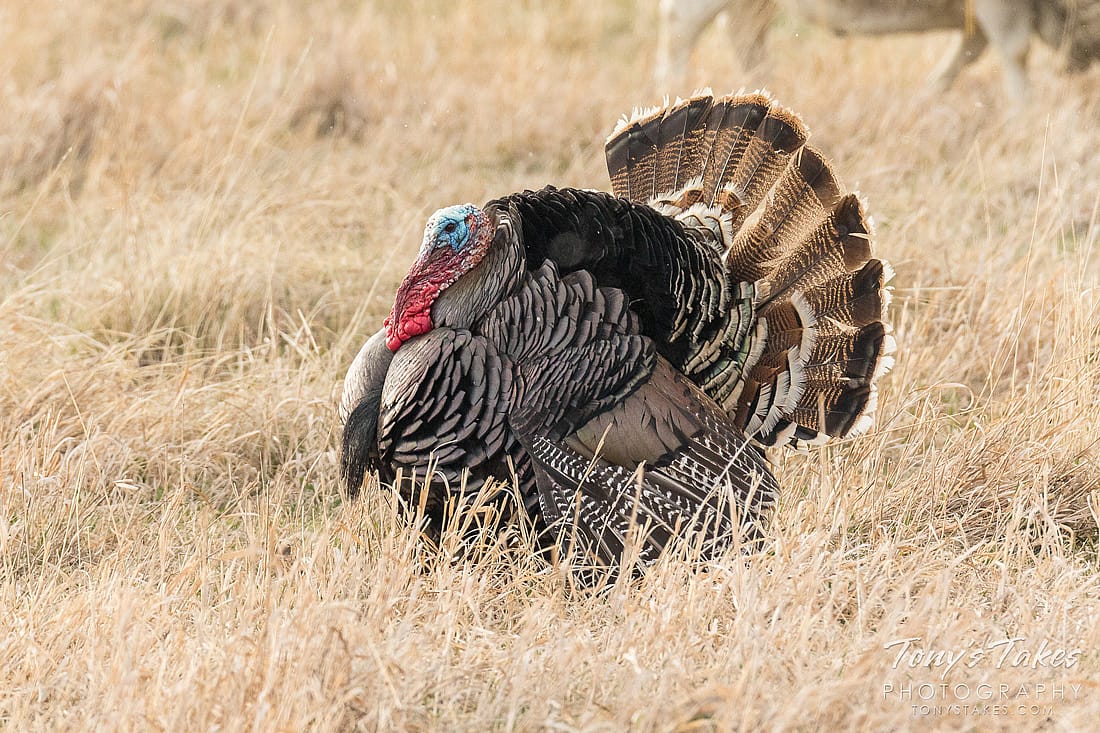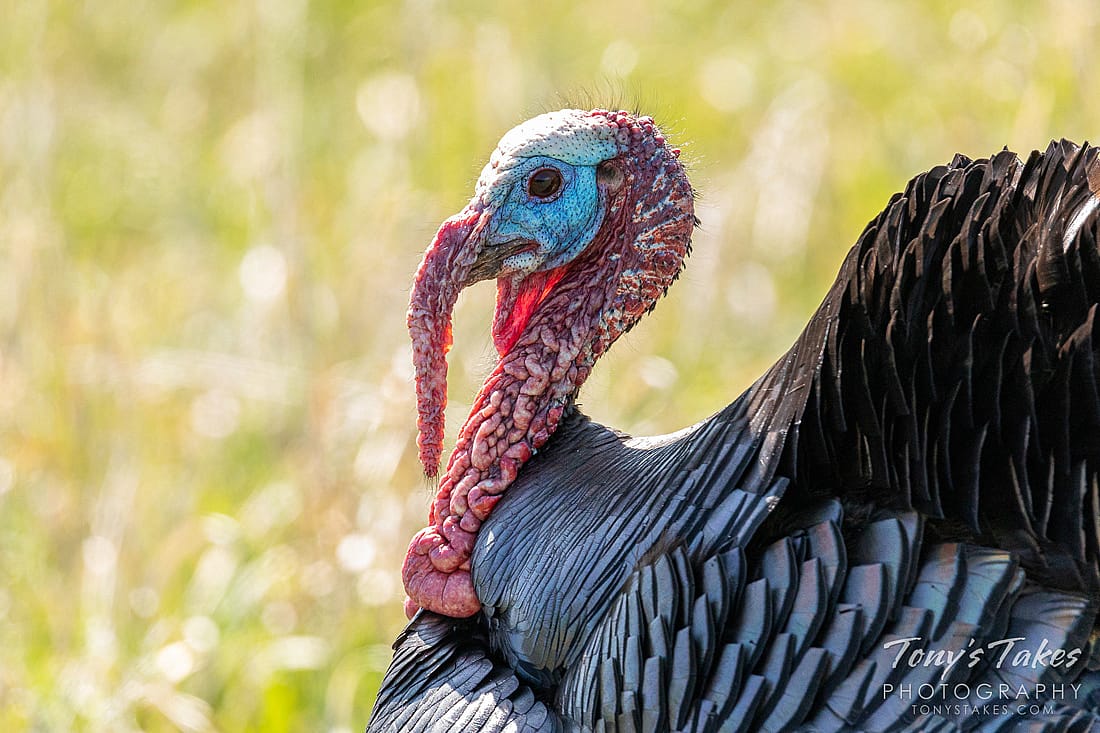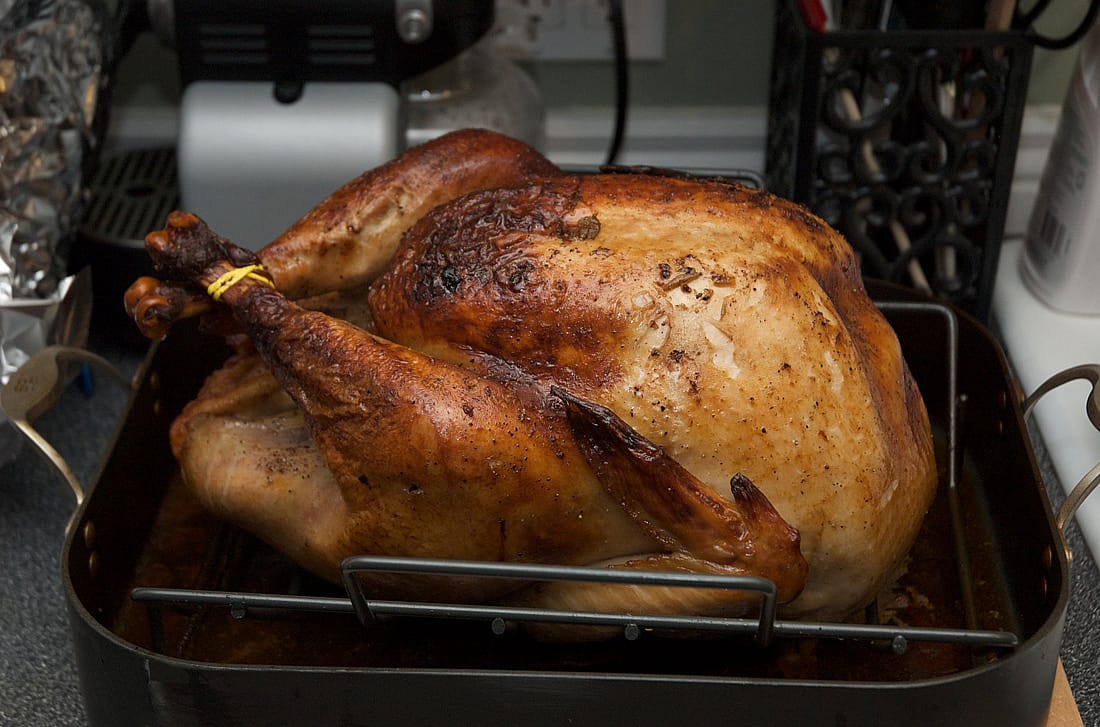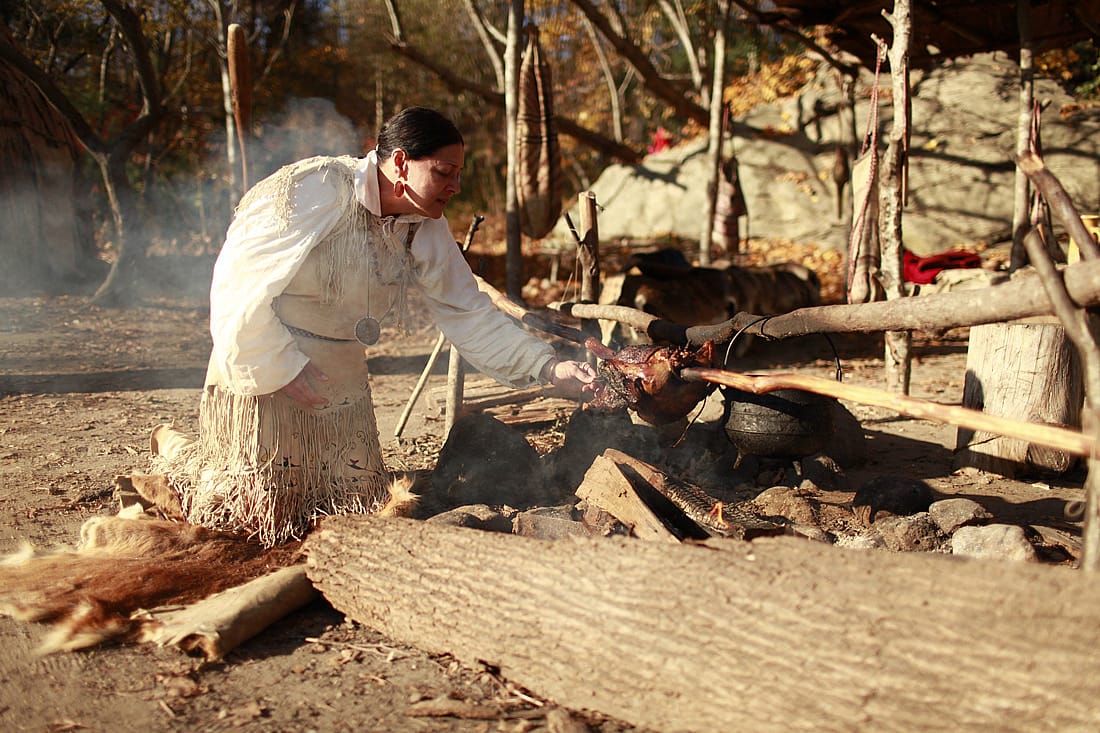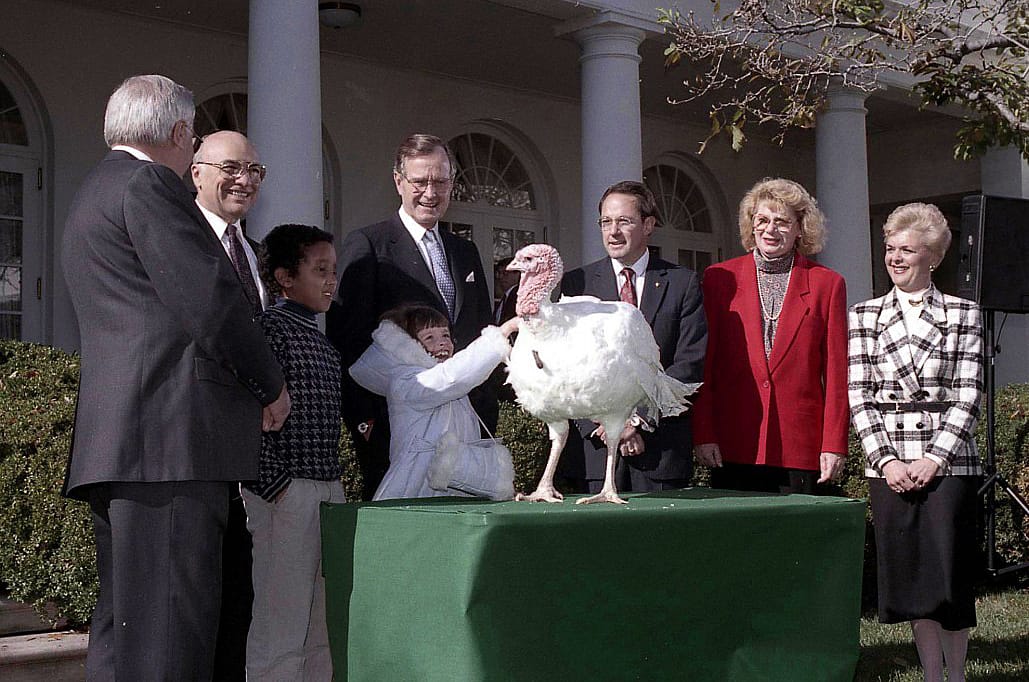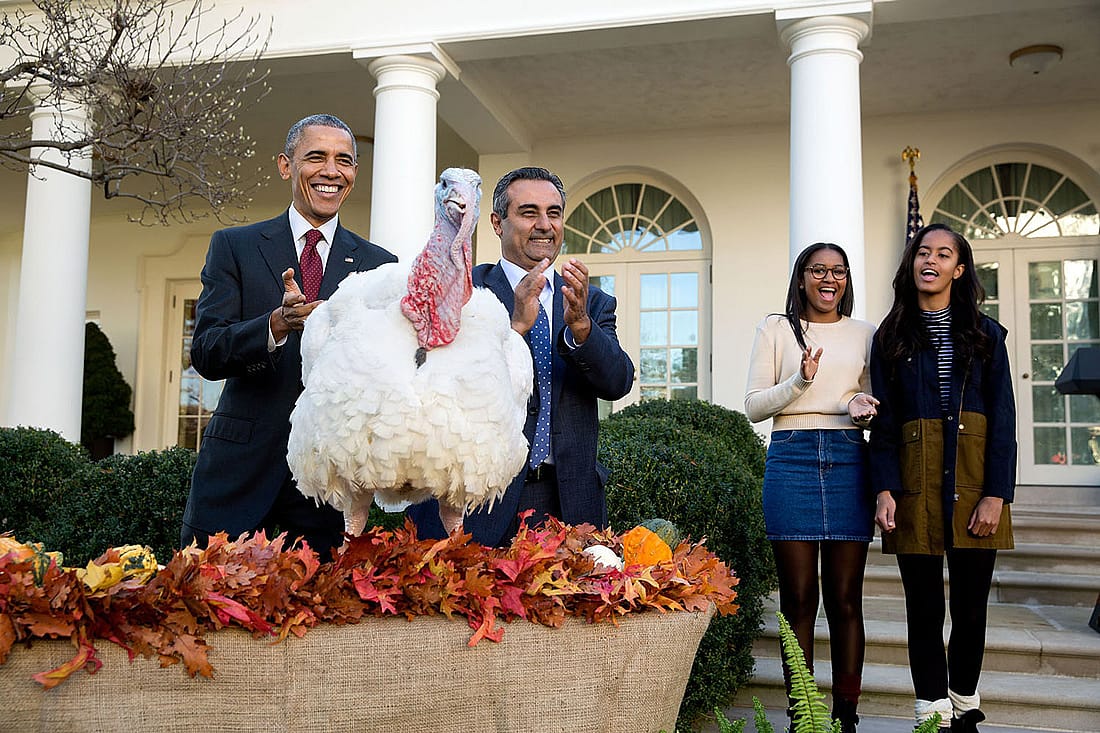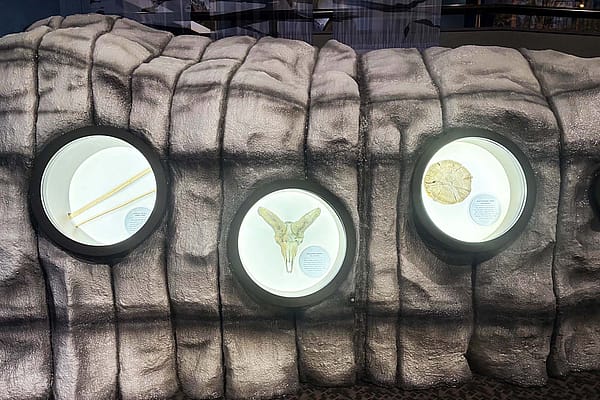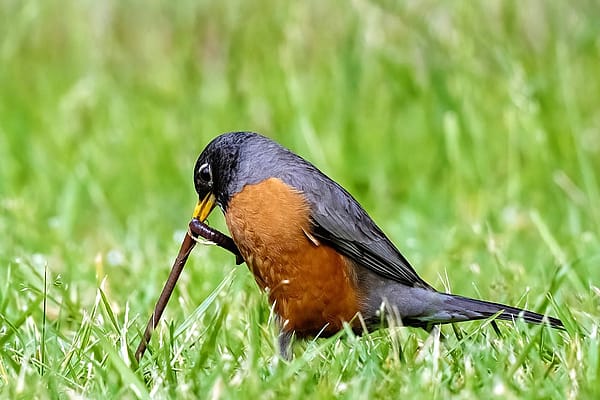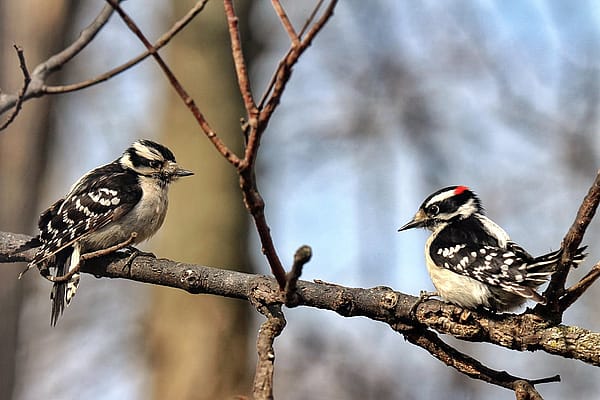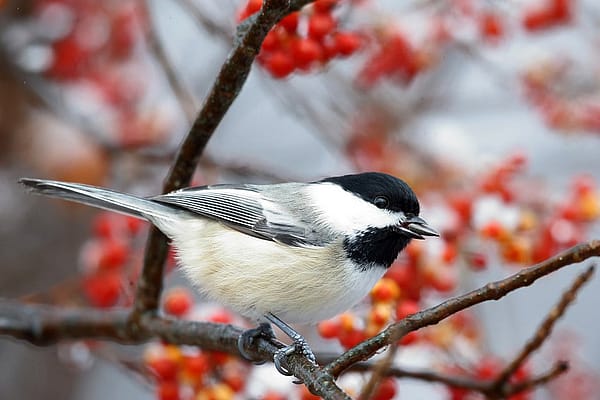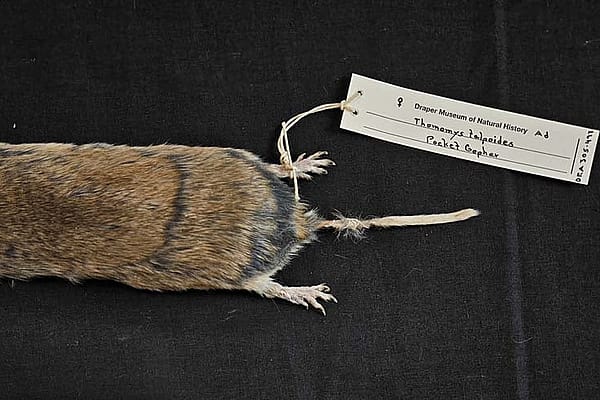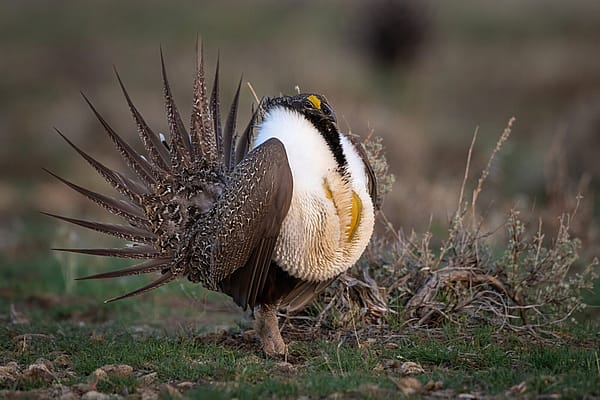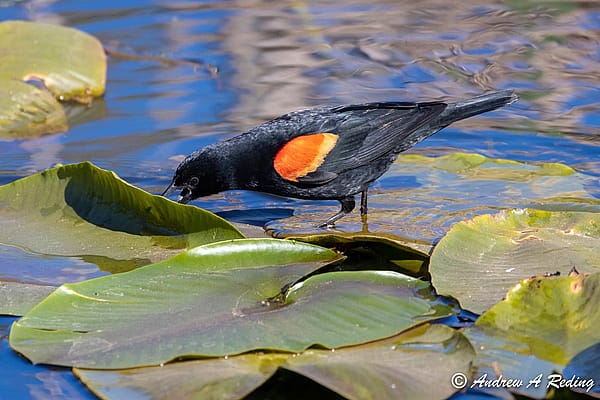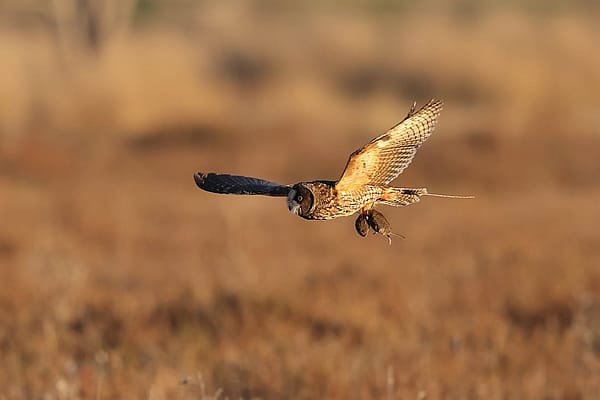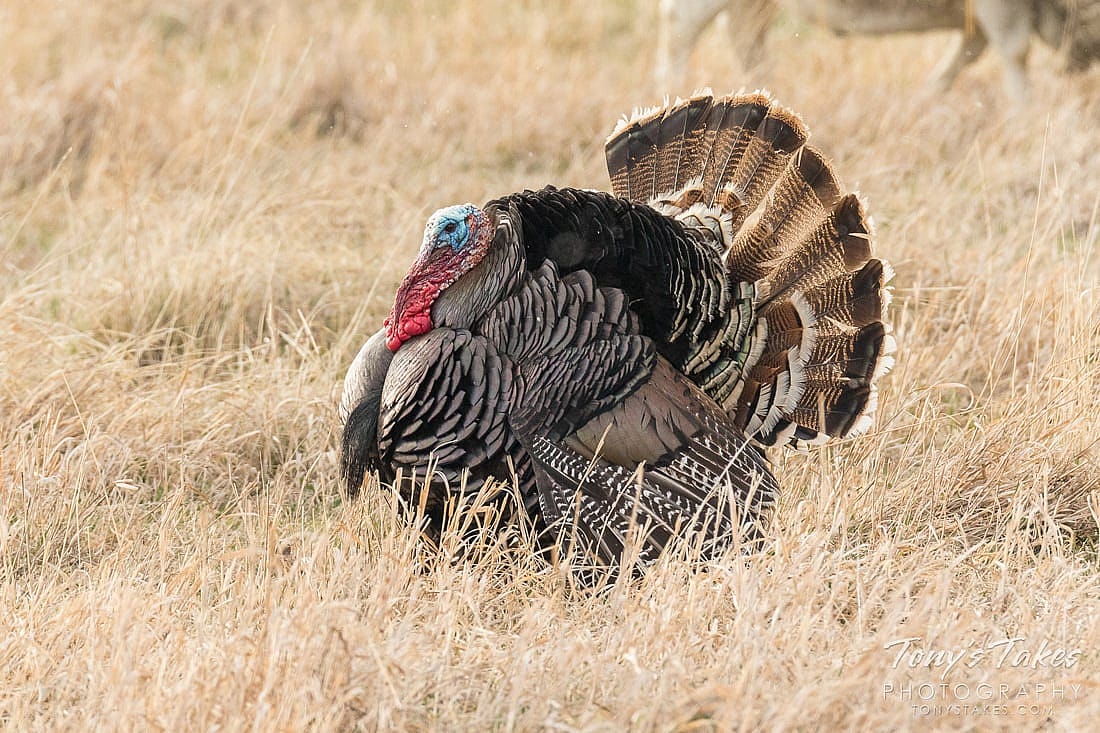
Turkeys, Thanksgiving, and Our National Bird
10 Interesting Facts About Turkeys
1) Did you know turkeys have a name sake? Turkey vultures received their common name because their naked head resembles the featherless heads of turkeys.
2) If wild turkeys become excited, the color of their bald heads can change in seconds. As a result you may see turkeys with faces turning pink, red, white, or blue.
3) Though not built for swimming, turkeys can swim if they need to. According to the Cornell Lab of Ornithology, turkeys tuck their wings in as close to their bodies as possible, then spread their tails and kick.
4) Turkeys can fly for short distances, though generally we see them walking or running. Surprisingly, according to the National Wildlife Federation, they can obtain a speed of about 55 miles per hour when in flight. With this ability to fly, wild turkeys commonly sleep in trees.
5) Turkeys don’t look as though they could be capable of running at fast speeds. Nevertheless they can run up to about 25 miles per hour.
6) A turkey’s gobble call can be heard at least a mile away.
7) Male turkeys are called Toms. While courting, they will spread their tails and strut in front of the females. The snoods (the fleshy part above the bill) coupled with their wiggling wattle under the beak are an attraction to the females.
8) Turkey chicks are usually out of the nest and walking around searching for food within 24 hours of hatching.
9) The domestic turkeys raised on farms for our tables originally came from Mexico. Native people living in Mexico had domesticated turkeys centuries before the early European explorers arrived. Subsequently, the explorers found turkeys to be an excellent food source. As a result, they brought turkeys back to Europe with them. Later the Europeans brought turkeys with them when they began to settle in America.
10) America’s wild turkeys almost became extinct in 1930. This was due to over hunting coupled with the loss of their forest habitats. We can thank the efforts of a number of organizations such as the National Wildlife Federation and the Wild Turkey Federation that worked tirelessly to save the species. Today it is estimated that there may be 7 million wild turkeys in North America.
What Did the Pilgrims and Indians Eat on Thanksgiving?
When we think of Thanksgiving, turkeys often come to mind. It is so traditional to have turkey for Thanksgiving that it isn’t unusual to hear people calling the holiday “Turkey Day.” But did Pilgrims eat turkey on the original Thanksgiving? Edward Winslow wrote in his journal that William Bradford sent out four men on a “fowling” expedition. Wild turkeys were commonly eaten, so it can reasonably be assumed that turkey would have been served, along with ducks and geese.
Winslow also wrote that the Wampanoag Indians brought five deer. Culinary historians believe that seafood and fish would have been present, especially since mussels and lobsters were common. Furthermore, Winslow wrote Indians could bring oysters to the feast.
Fruits such as blueberries, plums, gooseberries, and raspberries were available. Vegetables such as boiled onions, beans, cabbage, spinach, and stewed pumpkins may have been eaten. Corn was unlike what we eat today. Nevertheless, it may have been ground and turned into a mush or pudding.
Potatoes would not have been present as settlers did not grow potatoes during this time period. Also, there wouldn’t have been pumpkin pie as Pilgrims had no butter or wheat flour for making pie crusts.
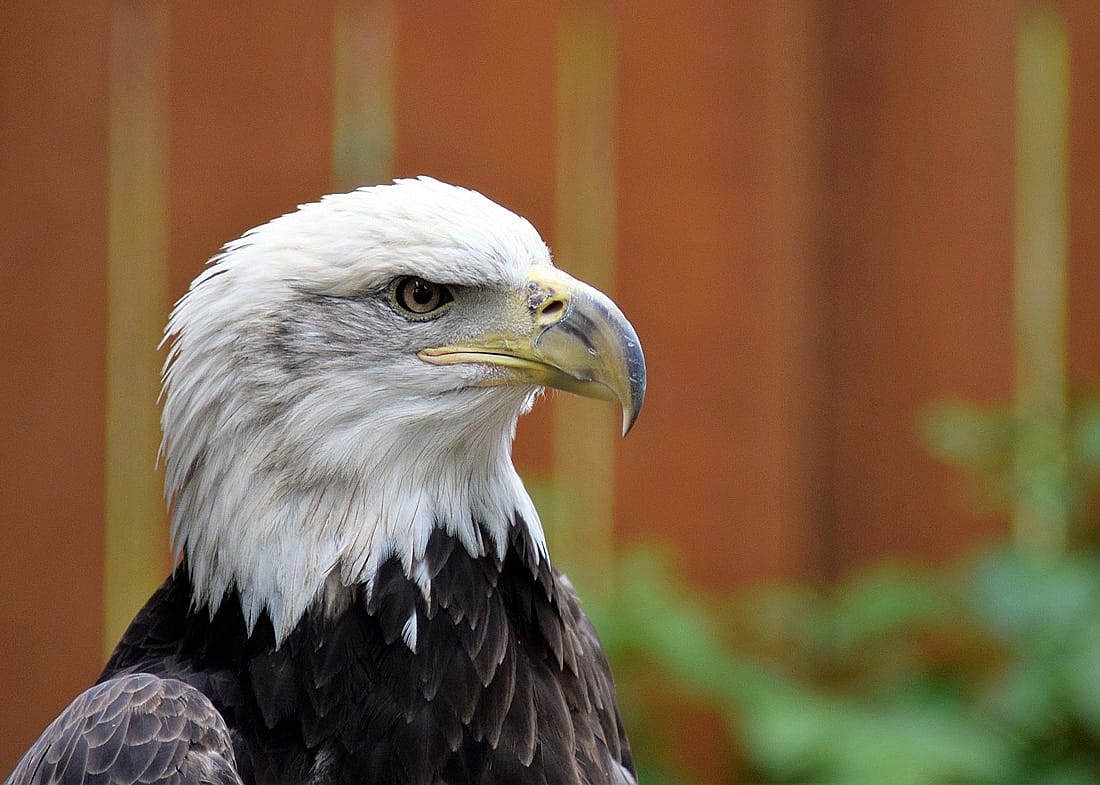
Did Benjamin Franklin Want Our National Bird to be a Turkey?
You may have heard Benjamin Franklin wanted our National Bird to be a Turkey. I thought this was an interesting and amusing story when I first heard this. But is this true? Did he actually push for the Turkey in place of the Bald Eagle?
The story originated from a letter Franklin wrote to his daughter in which he criticized the choice of the eagle. When Franklin first saw the design of the Great Seal he commented that the bird looked more like a turkey than an eagle.
Franklin’s Letter Expresses His Opinion
In his letter he wrote that the Bald Eagle was a bird of “bad moral character” that “does not get his living honestly.” Furthermore, in Franklin’s opinion the eagle was too lazy to fish for himself. This refers to the Bald Eagle’s frequent habit of stealing fish from other birds. He also stated that a turkey was a much more respectable bird than an eagle, though he did go on to criticize the turkey as a “little vain and silly.”
Moreover, Franklin wrote that the eagle was a “rank coward,” referring to how eagles allow smaller birds to mob them. In contrast, he believed the turkey was, “a bird of courage that would not hesitate to attack a grenadier of the British Guards.”
Consequently on one hand Franklin did think the turkey was a superior bird when compared to an eagle. On the other hand he did not propose that it be America’s National Bird. Therefore it is a myth, or as the Washington Post once said, it may be the “longest-running episode of fake news this country has ever seen.”
To read an excerpt from Franklin’s letter to his daughter in which he contrasts the eagle and the turkey visit this link: https://greatseal.com/symbols/turkey.html
Presidential Pardon
It is sometimes said that President Lincoln started the tradition of pardoning a turkey. In reality he “spared” a turkey, and it was for the Christmas Holiday. Reports of turkeys being given to the first families for Thanksgiving can be traced back to the 1870s. However it wasn’t until 1947 when the poultry industry began to present yearly turkeys that these presentations became official traditional gifts.
Recently there have been claims that President Harry S. Truman was the first president to “pardon” a turkey. The Truman Library & Museum does not verify this, however. Truman accepted two turkeys that year and stated they would “come in handy” for Christmas dinner. Obviously, this was no sparing or pardon.
In 1963, President Kennedy received a 40-pound turkey with a sign around its neck that read, “Good Eating, Mr. President!” Kennedy’s response was “Let’s keep him going. We’ll just let him grow.” However, when the Los Angeles Times reported the event their headline read “Turkey Gets Presidential Pardon.”
In 1973 it was actually Nixon’s wife, Patricia, who accepted the turkey. The Nixons didn’t eat their gift either, nor did they mention a pardon. Instead it was sent to the Oxon Hill Children’s Farm. A similar case happened when First Lady Rosalynn Carter excepted their turkey gift. The Carter’s turkey was sent to Evans Farm Inn to live in a mini zoo. Likewise, President Reagan sent his turkey to a farm. Still the term “pardon” had not yet been applied.
When We Finally Hear the Word “Pardon”
Finally in 1989 we hear the term “pardon” officially used by President George H. W. Bush. This may have been spurred by the fact that animal rights activists were picketing nearby. Bush commented “But let me assure you, and this fine Tom Turkey, that he will not end up on anyone’s dinner table, not this guy. He’s granted a Presidential pardon as of right now–and allow him to live out his days on a children’s farm not far from here.” Therefore, although turkeys had been spared for a number of years they were not officially pardoned until 1989 when George H. Bush started this new tradition.
In Summary
As you sit down to your Thanksgiving meal, reflect on the roundabout way we obtained our domesticated turkeys. Traveling all the way from Mexico to Europe and back to this country. Consider that the wild turkey was in all probability eaten at the first Thanksgiving, though there is no real proof. Furthermore, we were never in danger of having a turkey as our National Symbol, even though we do now pardon one each year.
Photo Credits
Tom Turkey Strutting, Tony’s Takes, Attribution-NonCommercial-NoDerivs 2.0 Generic License
Head shot of Tom Turkey, Tony’s Takes, Attribution-NonCommercial-NoDerivs 2.0 Generic License
Roasted Turkey by Brian Black, Attribution-ShareAlike 2.0 Generic License
Plimoth Plantation is a Smithsonian Affiliate living history museum located in Plymouth, Massachusetts. Photo is by the Massachusetts Office of Travel, Attribution NoDerivs 2.9 Generic License
Jade the Draper Museum Raptor Experience’s Bald Eagle, downloaded form the Draper Natural History Museum at the Center of the West’s Facebook page, https://www.facebook.com/drapernaturalhistorymuseum
Nixon’s Wife Patricia accepting a turkey, GPA Photo Archive, Attribution-NonCommercial 2.0 Generic License
President George H. W. Bush pardons a turkey, GPA Photo Archive, Attribution-NonCommercial 2.0 Generic License
President Obama Pardons Turkey in 2015, GPA Photo Archive, Pete Souza, Attribution-NonCommercial 2.0 Generic license,
Written By
Anne Hay
Anne Hay has a Bachelor's degree in Elementary Education and a Master's in Computers in Education. She spent most of her working years teaching third grade at Livingston School in Cody, Wyoming. After retiring she began doing a variety of volunteer work for the Buffalo Bill Center of the West’s Draper Natural History Museum. Anne loves nature and has a concern for the environment. She believes that educating the public, so that they will have a better understanding and appreciation for the natural world, is very important. Because of this belief, volunteering at the Center is a perfect fit. She spends time in the Draper Lab, observing eagle nests for Dr. Charles Preston’s long-term research project on nesting golden eagles, writing observation reports of raptor sightings in the Bighorn Basin, and working with the Draper Museum Raptor Experience. Anne states that, “Having a bird on my glove, is one of my all time favorite things in life.”
